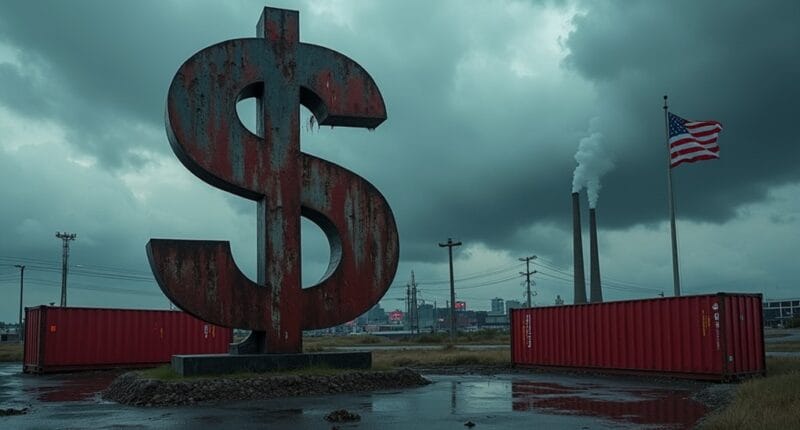Recent tariff policies are wreaking havoc on America’s economic edge. The numbers paint a grim picture: GDP down 6%, wages dropping 5%, and manufacturing jobs vanishing by the millions. Average households are getting slammed with $3,800 in extra costs, while the government rakes in $5.2 trillion. Nice work. With the highest tariff rates since 1909, America’s competitive advantage is bleeding out. The real damage? It’s lurking in the long-term consequences.

How severely are Trump’s tariff policies hammering the U.S. economy? The numbers paint a brutal picture. The latest projections show a staggering 6% reduction in long-term GDP and wages dropping by 5%. Let that sink in. We’re talking about the highest tariff rates since 1909, hitting a jaw-dropping 22.5%.
The average American household is getting slammed with $3,800 in additional costs. And if you think that’s bad, middle-income families are looking at lifetime losses of around $22,000. Ouch. The clothing industry? It’s taking a particular beating, with prices shooting up 17%. So much for affordable wardrobes. These economic headwinds are forcing many Americans to reevaluate their retirement investment strategies amid market volatility.
American families are drowning in tariff costs, with households hit for $3,800 more and clothing prices skyrocketing 17% higher.
The broader economic impact is equally grim. GDP growth in 2025 is expected to tank by 0.9 percentage points from all these tariffs. Translation: the U.S. economy could become permanently smaller by $100-180 billion annually. The manufacturing job losses have already hit 5 million since 1997. That’s not pocket change, folks. These tariffs are actually doing more damage than if we’d just hiked corporate taxes instead.
Sure, the government’s coffers are getting fatter – about $5.2 trillion over ten years. But at what cost? Workers are watching their purchasing power evaporate. Low-income households are losing $1,700 annually, while the April 2nd announcement alone is costing the average household $2,100. Some bargain. The nation’s capital stock will plummet by nearly 10% by 2054.
The ripple effects are spreading like wildfire. U.S. global competitiveness? Taking a nosedive. International capital flows? Drying up. And here’s the kicker – existing trade models might actually be underestimating just how bad things could get. Future generations are fundamentally being handed a smaller, less prosperous economy.
The math is simple but brutal: every household, regardless of income level, is worse off. The American economy’s competitive edge is being dulled by these policies, and the damage isn’t just temporary. We’re looking at long-term, structural changes that could reshape the economic landscape for decades to come. Some legacy.





